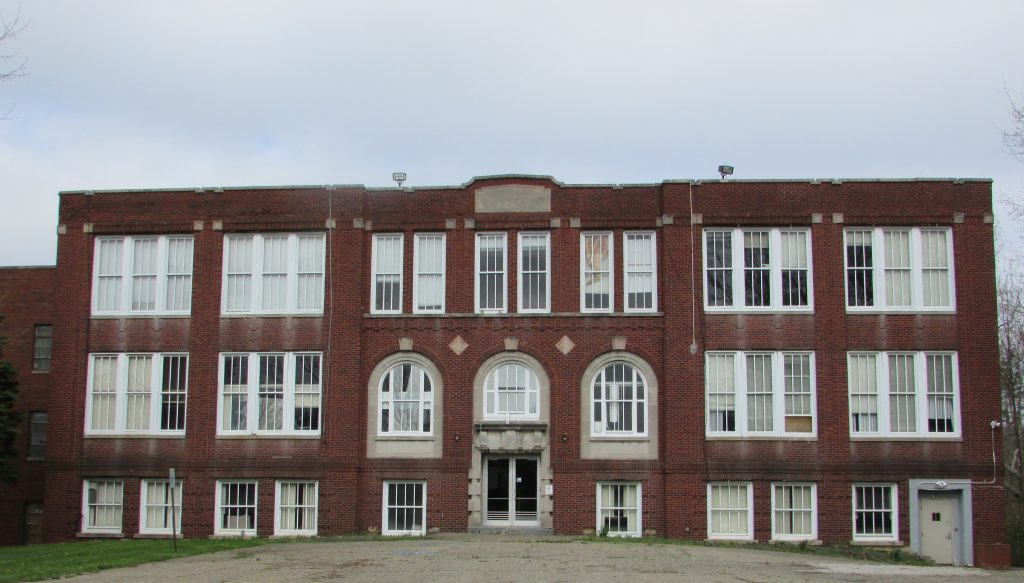Although he was born and came to prominence prior to the centennial celebrations in 1917, much of his life’s work was carried out afterward, well into the twentieth century. From the dawn of the twentieth century up until his passing in 1956, Dr. Chamberlin aided townsfolk and friends with whatever ailed them. During more than fifty years practicing medicine, he gave tirelessly of his time, participating in a number of area organizations. In 1915, the doctor served as president of the Library Board. After many years filled with many long days, Dr. R. B. Chamberlin passed away on April 24, 1956. In honor and recognition of his dedication, the new high school was named for him the year following his death.
Tag Archives: Chamberlin, R.B.
Alling Croquet Club
One of Twinsburg’s more unique sports fads in the middle of the twentieth century was croquet.
The elite of Twinsburg met and played often at the Alling Croquet Club. Led by Dr. R.B. Chamberlin the club was state of the art for its time and even featured a lighted scoreboard. The matches continued after Dr. Chamberlin’s passing in 1955, the only difference being they were conducted with a bronze plaque honoring Dr. Chamberlin present in the southeast corner of the club.
The sport gained such popularity in Twinsburg that the Bulletin printed tournament scores on the front page of the newspaper in the mid 1950s.
Chamberlin Family Films 1938-1949
A collection of home movies taken by the Chamberlin family, who took care of the medical needs of Twinsburg for decades. The home movies were shot between 1938 and 1949.
Courtesy of Dale Diersing
Chamberlin Family
Courtesy of Dale Diersing
Educational Facilities
The pages of history record and recall stories and statistics of the earliest schoolhouses to dot the countryside, these antiquated institutes of learning were long vacant by the time the first truly modern school came into being. While the first centralized school brought all the students under one roof, it was the “Old School” that many remember so fondly.
The source of countless lessons learned and friendships forged, the old schoolhouse located just off the town square served the area’s children for nearly seventy-five years. Welcoming its first students in the fall of 1921, the two-story red brick schoolhouse was a replacement for the older, whitewashed building that once stood behind it. Games were won and lost, field trips were taken, and countless bells rang, signaling the end of one period and the beginning of another. For more than thirty years, the school served all grades from kindergarten through twelfth grade. The edifice, now vacant, evolved in numerous ways after closing its doors in 1992, including its utilization by Kent State University. Congressman Steven LaTourette used the space while campaigning, it was the first location of the Twinsburg Senior Center, and at one point a proposal to transform it into a perambulator museum was bounced around.

Exterior of vacant school building taken April 26, 2016.
All of Twinsburg’s current educational facilities except the new high school and the Kent State University Regional Academic Center were constructed in the mid-twentieth century, a time rampant with civil unrest and racial tensions. For those who attended area schools during this time, race relations were present, though subdued in comparison to other areas of the country. As is the case with most things though, time’s passage washed away much of the tension, as new students, new initiatives, and new administration came and went. As our world grows increasing diverse, so too does the student body. Individuals from all corners of the world converge amid the lockers and lunch tables, mirroring the melding of ethnicities, nationalities, ideologies, and opinions that occurs on the web on a daily basis. Today, most school-age students from the three communities attend school in one of five facilities:
- Wilcox Primary (kindergarten through first grade)
- Samuel Bissell (second and third grade)
- George G. Dodge (fourth through sixth grade)
- R. B. Chamberlin (seventh and eighth grade)
- Twinsburg High (ninth through twelfth grade)
The newest addition to Twinsburg’s educational landscape is Kent State’s Regional Academic Center. It offers a less expensive alternative for college students from both Twinsburg and neighboring cities such as Oakwood and Bedford. The building is LEED (Leadership in Energy and Environmental Design) certified as a “green” building. Kent State University has had a presence in Twinsburg since 1991, when it began offering training and education to employees at the Chrysler stamping plant.
Class Reunion, 1970
Courtesy of Dale Diersing
Motorcycle Collision
Two lives collided along the byways south of Twinsburg on an early morning in 1913. Two men unaware of one another, raced toward an arbitrary spot where their lives would end at 90mph. As they headed toward one another, William Thompson of Akron, and Frank Novak of Cleveland, collided. Blame was placed on Frank Novak and his faulty motorcycle. Having left that morning from Cleveland intending to participate in an endurance run to Youngstown, the young Mr. Novak soon began experiencing mechanical problems. A short break outside Twinsburg gave him time to look over the motorcycle and make a few quick adjustments.
Assuming he had corrected the issue, he jumped back on his motorcycle and took off, intent on catching up to his fellow riders. At the moment Mr. Novak lost control, his bike veered into Thompson; the force of the collision sent each man flying from his machine. According to news reports, “Thompson was found by Mrs. Hoff unconscious and bleeding from a dozen wounds. Novak had retained consciousness, but was unable to speak.”
Residents in the vicinity of the collision reached Dr. R.B. Chamberlain by phone. He wasted little time, making it to the two men as quickly as possible. Thompson died quickly. Novak held on a bit longer, dying en route to the hospital.